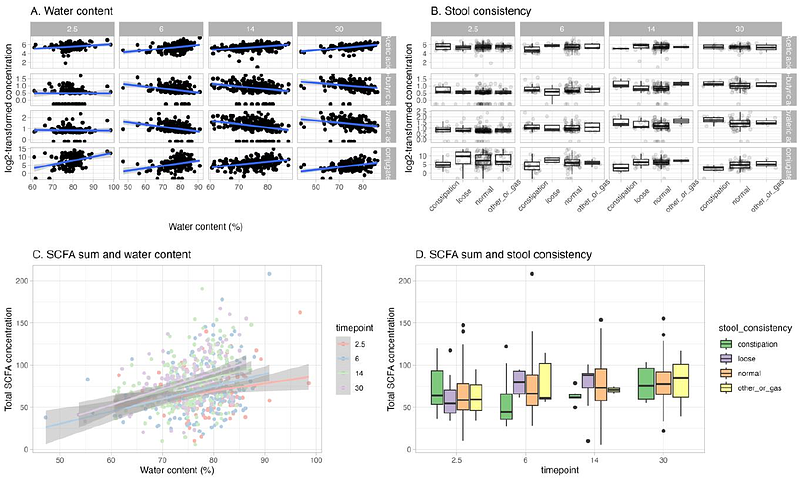Fecal microbiota and metabolite composition associates with stool consistency in young children

Fecal microbiota and metabolite composition associates with stool consistency in young children
Aatsinki, A. K.; Isokaanta, H.; Krakstrom, M.; Lahti, L.; Lukkarinen, M.; Munukka, E.; Karlsson, H.; Karlsson, L.; Oresic, M.; Dickens, A. M.; Lamichhane, S.
AbstractStool consistency explains a large proportion of inter-individual variation in gut microbiota and represents a useful measure of gut transit time, which is pivotal for bacterial metabolism and vice versa. However, in infants and small children, a detailed understanding of how gut microbiota and the metabolome associate with stool consistency is lacking. We analyzed both stool microbiota and metabolome of 2.5 (n=360), 6 (n=229), 14 (n=274), and 30-month-old children (n=169) from the FinnBrain Birth Cohort Study using 16s rRNA sequencing and mass spectrometry-based targeted techniques. We used stool water content and parent-reported stool consistency as proxies for stool consistency. We found that microbiota community composition as well as the relative abundance of specific genera such as Clostridium, Hungatella, and Lactobacillus were associated with stool consistency. Of the metabolites, lower concentrations of conjugated bile acids and acetic acid were associated with having constipation and lower water content. Branched short-chain fatty acid concentrations were negatively associated with stool water content. The findings reflect a shift in bacterial saccharolytic to proteolytic metabolism in the gut. Parental crude reports agreed with the objective measure of child stool consistency, and associated with similar features in the stool metabolome. Overall, our findings support the concept that stool consistency and total water content associate with gut microbiota composition and metabolic activity in infants and young children.


